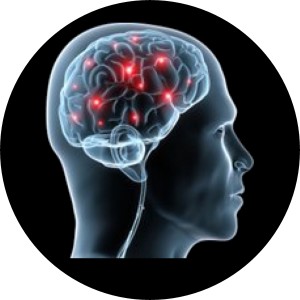PSYCHOPHYSIOLOGICAL STRESS ANALYSIS
The inspiration for the PTSSA technology was born in 1975 out of communications between Fred Fuller, the inventor of the Mark II Voice Analyzer and Phil Sprague, the inventor of the PTSSA technology. In development, Sprague theorized that two processes were activated when a subject is being faced with the dilemma of answering a question(s).
the PTSSA technology was born in 1975 out of communications between Fred Fuller, the inventor of the Mark II Voice Analyzer and Phil Sprague, the inventor of the PTSSA technology. In development, Sprague theorized that two processes were activated when a subject is being faced with the dilemma of answering a question(s).
The first process, entitled Time of Physical Contact (TPC) had emerged from an idea that Fred Fuller had been investigating regarding physical touch inputs can be an indicator of an emotional reaction. Sprague further defined the physical touch inputs to represent the TPC with a touch device. Sprague theorized that the TPC indicates a psychophysiological response (PR) to a stimulus and that abnormal PR variations to a stimulus in comparison to other stimuli would indicate the subject, more than likely, needs to be further evaluated regarding issue(s) in which the subject had a significant PR. This may include, but not necessarily limited to: Investigative interviewing/interrogation; and/or voice stress analysis or polygraph.
The second process involved in the PTSSA system is the measurement of reaction time. Sprague theorized that there is greater mental effort exerted when a subject answers questions of concern. That is, cognitively, people have variations in their reaction times to questions that induce emotional reactions. Determining how to respond to questions of concern requires inhibition or suppression to formulate a response leading to greater reaction times.
In the early 2003, Sprague investigated the advances in touch screen technology and incorporated his two theoretical ideas into the PTSSA technology. Recognizing the consistency and the proven reliability and accuracy of the polygraph examination, Sprague developed the PTSSA technology to complement the existing truth verification technologies. Utilizing the similar examination architecture and question formalization used by the polygraph industry, Sprague developed simple Yes or No interrogatory questions to answer in an 18 question test concerning three related issues.
Question formalization are paramount in determining people are being truthful or less than truthful. The PTSSA technology is not a method of determining truth or lie. It is designed to assisted in investigative interviewing and/or voice stress analysis or polygraph by helping to focus on issues of concerns that need further evaluation.
How is a Psychophysiological Response Measured?
Muscle Variations
A tremor is an unintentional, somewhat rhythmic, muscle movement involving to-and-fro movements (oscillations) of one or more body parts. It is the most common of all involuntary movements and can affect the hands, arms, head, face, vocal cords, trunk, and legs. Most tremors occur in the hands. A very common kind of tremor is the chattering of teeth, usually induced by cold temperatures or by fear.
http://pennstatehershey.adam.com/content.aspx?productId=117&pid=1&gid=003192 *
http://en.wikipedia.org/wiki/Tremor
Tremor is an unintentional, rhythmic muscle movement involving to-and-fro movements (oscillations) of one or more parts of the body. It is the most common of all involuntary movements and can affect the hands, arms, head, face, voice, trunk, and legs. Most tremors occur in the hands.
http://www.ninds.nih.gov/disorders/tremor/detail_tremor.htm
All tremors have variable amplitude that usually increases with emotional activation (fear, anxiety, excitement).
http://www.seattleneurology.org/postural-tremor.html
There have been numerous studies regarding methods for determining if someone is being forthright or less than. These studies include, but not limited to, eye movement, pupil dilatation, facial expressions, body movement, changes in heart rate and blood pressure, breathing patterns, vocal changes, and all measure variations of these factors due to the changes of involuntary and voluntary muscle reaction to help determine if a subject is being forthright.
Currently the most widely used technology in determining whether or not a response is forthright is the polygraph and voice stress analyzer technology currently being utilized by thousands of law enforcement agencies. These devices are time consuming and costly and require a highly skilled operator/examiner. The PTSSA technology is specifically designed to reduce the haystack extremely fast so the needles can be found and further evaluated by proven interviewing and/or interrogation techniques and/or truth verification technologies.
Speak Your Mind